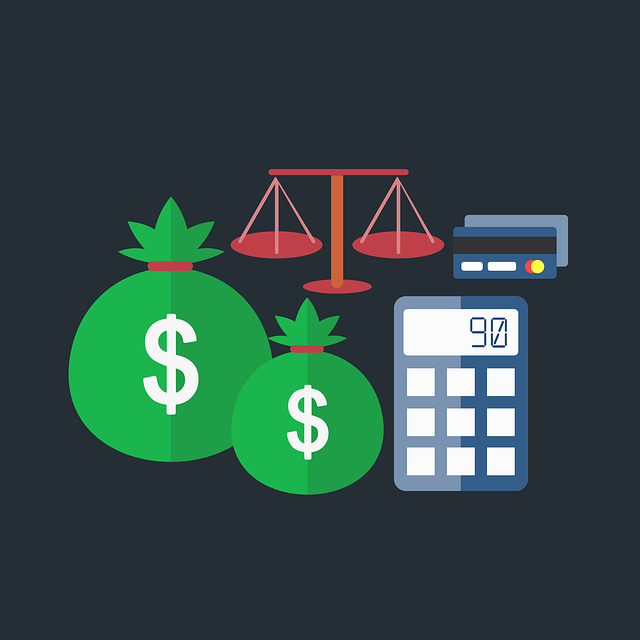Equipment financing, including equipment loans and lease-to-own programs, empowers businesses to acquire machinery, vehicles, and technology without large upfront costs. These flexible options, tailored to diverse industry needs, enable startups and established enterprises to scale effectively by managing cash flow through structured payments. Equipment loans offer competitive interest rates and alignment with revenue cycles, fostering sustainable growth. Case studies demonstrate their utility across various industries, benefiting businesses seeking expansion while minimizing cash strain. Effective post-financing equipment asset management, including maintenance and inventory tracking, is crucial for maximizing ROI and securing long-term success through strategic equipment acquisition.
“Unleash your business’s potential with cost-effective equipment financing, a powerful catalyst for scaling enterprises. This comprehensive guide explores how equipment loans and various finance options can fuel growth by bridging the gap between ambition and resources. From understanding the basics of equipment financing to securing deals and managing assets post-funding, we’ll navigate the landscape of equipment acquisition, providing insights from real-world case studies.”
- Understanding Equipment Financing for Business Growth
- Benefits of Equipment Loans for Scaling Enterprises
- Types of Finance Options Available for Equipment Acquisition
- How to Secure Cost-Effective Equipment Financing
- Case Studies: Success Stories in Equipment Loan Scaling
- Strategies for Effective Equipment Asset Management Post-Financing
Understanding Equipment Financing for Business Growth

Equipment financing is a strategic tool for businesses aiming to scale and grow. It involves securing funds to acquire essential machinery, vehicles, or technology, enabling companies to expand their operations efficiently. This alternative to traditional purchasing methods, such as cash or bank loans, offers several advantages. One of the key benefits is flexibility; businesses can choose from various financing options tailored to their specific needs, including equipment loans and lease-to-own programs.
By leveraging equipment financing, startups and established enterprises alike can gain access to high-quality assets without immediate large-scale investments. This approach allows for more manageable cash flow, as payments are often structured over time, aligning with the business’s financial cycle. Moreover, it provides an opportunity to upgrade or replace outdated equipment, keeping businesses competitive in their respective industries.
Benefits of Equipment Loans for Scaling Enterprises

Equipment loans offer a range of benefits for businesses looking to scale and expand their operations. One of the primary advantages is access to capital for equipment acquisition, which is often a significant investment. Traditional financing methods can be time-consuming and restrictive, but equipment loans provide a swift and flexible alternative. Businesses can secure funding quickly, enabling them to purchase necessary machinery, vehicles, or technology, thereby accelerating growth.
These loans are tailored to meet the unique needs of enterprises in various industries. They offer competitive interest rates, especially when compared to other short-term financing options. Moreover, equipment loans allow businesses to maintain a healthy cash flow as they can structure repayments to align with their revenue cycles. This strategic financing approach ensures that scaling efforts remain sustainable and financially manageable.
Types of Finance Options Available for Equipment Acquisition

When it comes to acquiring new or used equipment for business growth, entrepreneurs have several finance options at their disposal. One popular choice is equipment loans, which can be tailored to suit various needs and budgets. These loans are specifically designed to fund the purchase of machinery, vehicles, or other assets that are integral to a company’s operations. The beauty of this option lies in its flexibility; businesses can opt for secured or unsecured loans depending on their financial standing and preferred risk level.
Apart from traditional bank loans, there are innovative finance equipment solutions like lease financing and rent-to-own programs. Lease financing allows businesses to use the equipment for a fixed term with an option to purchase at the end, while rent-to-own plans offer similar benefits but often with more flexible payment terms. These alternatives can be particularly advantageous for startups or businesses with cash flow constraints as they provide immediate access to necessary equipment without a significant upfront investment.
How to Secure Cost-Effective Equipment Financing

Securing cost-effective equipment financing is a strategic move for businesses aiming to scale without breaking the bank. One effective approach is to explore equipment loans tailored specifically for business growth. These loans are designed to fund the acquisition of essential machinery, vehicles, or technology, enabling companies to expand their operations. By partnering with financial institutions that specialize in equipment financing, businesses can access competitive interest rates and flexible repayment terms.
Instead of burdening your cash flow with a large upfront payment, finance equipment through a loan that aligns with your expected return on investment. This strategic funding approach allows you to spread out the cost over time, making it manageable. Moreover, these loans often come with tax benefits as depreciation can be claimed, further reducing financial strain.
Case Studies: Success Stories in Equipment Loan Scaling

Many businesses have successfully leveraged equipment loans to fund their growth and expansion. These case studies offer valuable insights into how different industries have utilized equipment financing as a scalable solution. For instance, a tech startup could secure funding for acquiring the latest manufacturing machinery, enabling them to produce custom hardware at a larger scale. Similarly, a logistics company might use equipment loans to purchase advanced vehicles, improving efficiency and allowing them to take on more contracts.
In each case, equipment loans provide businesses with the necessary capital to invest in assets, fostering growth without straining cash flow. This approach is especially beneficial for startups and small enterprises looking to scale quickly. By partnering with financial institutions offering flexible loan terms and competitive rates, companies can focus on their core operations while ensuring they have the resources needed to stay ahead in their respective markets.
Strategies for Effective Equipment Asset Management Post-Financing

Post-financing, effective equipment asset management is key to unlocking the full potential of equipment loans and securing sustainable business growth through finance equipment acquisition. Businesses should implement strategic practices to maximize return on investment (ROI). This includes regular maintenance checks and prompt repairs to prevent breakdowns, ensuring optimal equipment performance. Regularly updating and upgrading assets can extend their lifespan and keep them relevant in a dynamic market.
Additionally, efficient inventory management is vital. Businesses should meticulously track each piece of financed equipment, recording its location, utilization, and condition. This data enables informed decisions on asset allocation, identifying underutilized resources, and planning future acquisition or replacement needs. By adopting these strategies, businesses can effectively manage their equipment loans, optimize operations, and strategically plan for future growth through responsible equipment acquisition.






